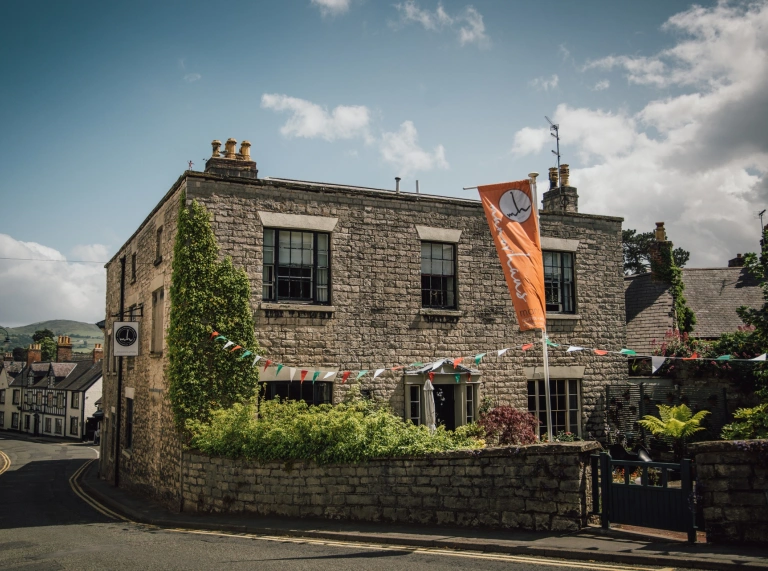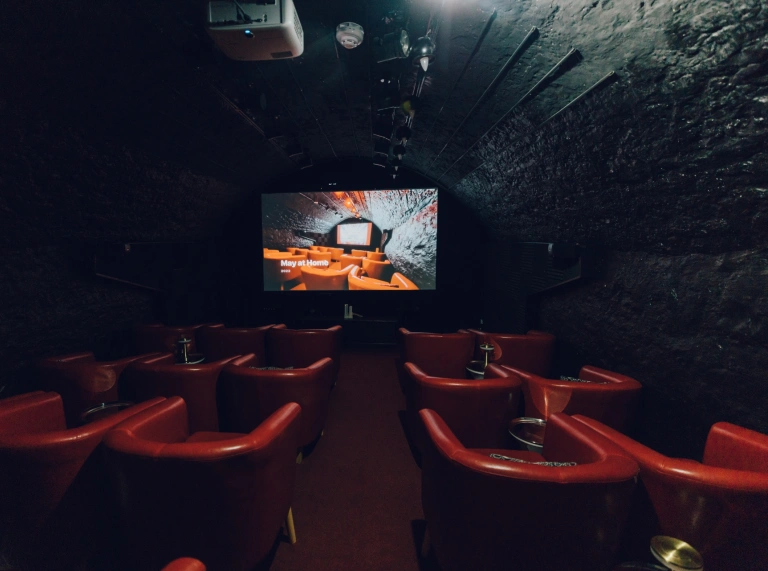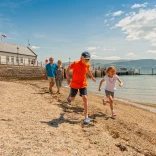I've never been anywhere in Wales that's quite like Ruthin (and listen closely, cariads, it's pronounced Rith-in: after rhudd, meaning deep red, and din meaning fort, referring to the town's famous castle). Ruthin's like a gorgeous history lesson of the country in miniature. Go down to the castle: here’s Wales’ tumultuous medieval past. Head back up the hill into town: here’s its history in the time of the Tudors. Also, all around, here’s its cool, cultured present, all in one place – and as it's so pocket-sized, all on one trip.
In Ruthin, you’ll also eat and shop well, enjoy art and incredible views, plus get stalked by three nosy peacocks, if you’re as lucky as I was. So let's shake our tailfeathers proudly, and travel back in time together.
Start by getting medieval down by the castle...
It’s survived a revolt by Owain Glyndwr and a sixteen-week siege during the English Civil War: Ruthin Castle certainly has many stories to tell. It’s a strangely lovely, fairytale place, with medieval walls still around from the castle’s original 13th century incarnation. Back then, its name was Castell Coch yng Ngwern-for (Red Castle in the Sea Swamps).
Outside the castle walls, you’ll also see a sign for Lady Grey’s grave, which also arrived at this time – Lady Grey was a Middle Ages dignitary sentenced to death after killing her husband. Ghost-spotters talk about her cloaked, silvery figure haunting the battlements. Thankfully, I was only followed by three of the castle’s glorious peacocks.
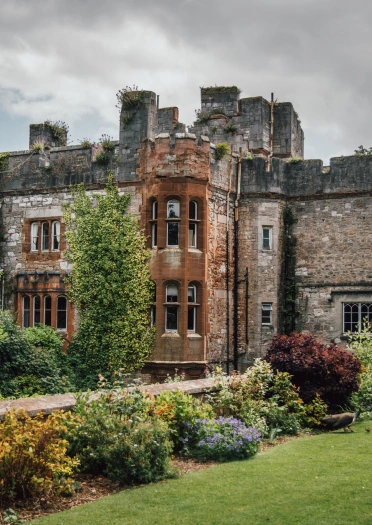
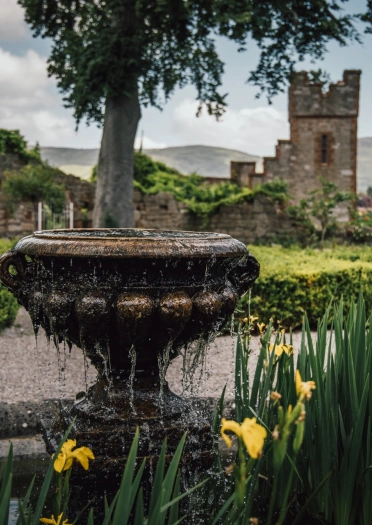
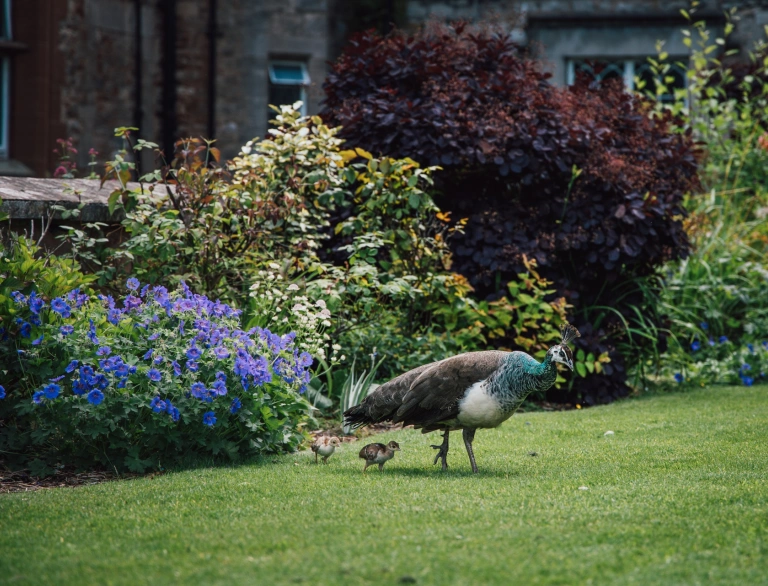
The castle was largely rebuilt in red sandstone in the 19th century, when its beautiful Italian Gardens were added. You can still dreamily wander around them today. King Charles III, then Prince of Wales, stayed at the castle before his investiture in Caernarfon in 1969. There’s also a spa here, with treatment rooms, a thermal suite and a gym.
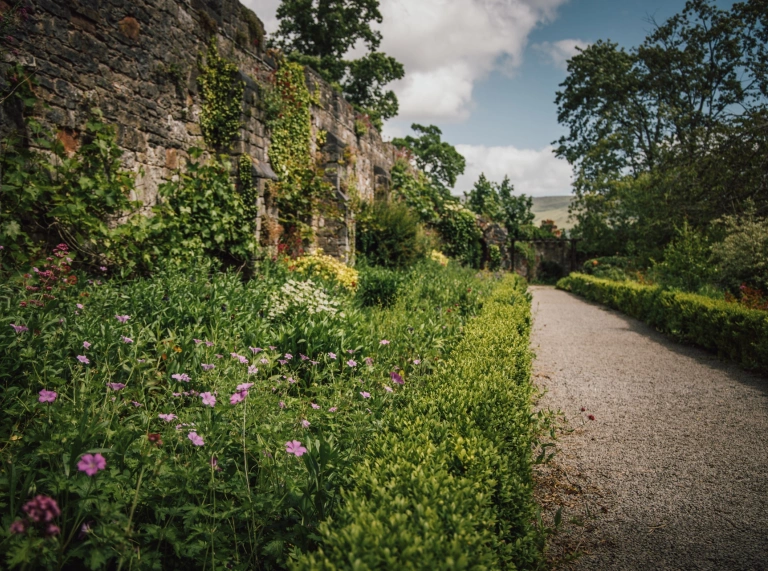
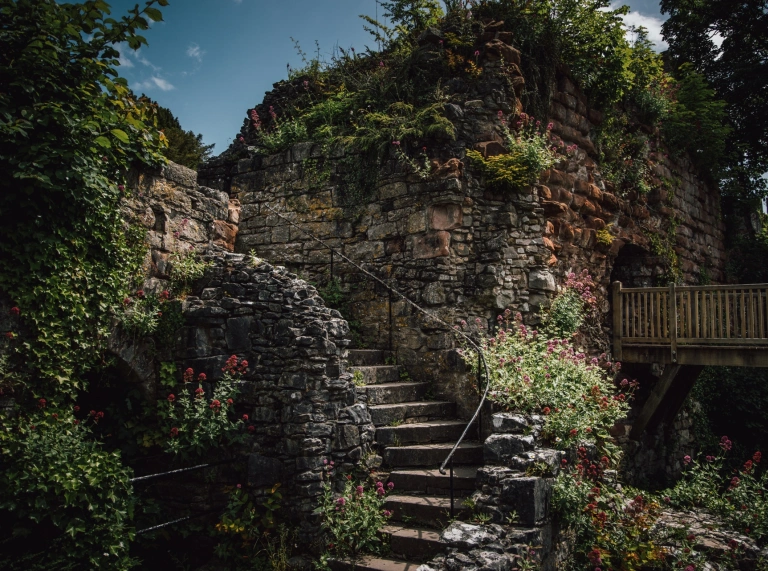
Then continue your Ruthin revolution downtown…
In the town centre, you'll find the plaque that shows where Owain Glyndwr lit the very first flame of the Welsh Revolt. This was only two days after he was declared Prince of Wales. Much of Ruthin and its castle were destroyed at the time, but the town’s importance on the borders saw rebuilding begin quickly.
A great way of finding out about the town’s history from this point is through the brilliant Ruthin Art Trail, which begins just outside town at the Ruthin Craft Centre. The centre is worth a visit in itself for its brilliantly thought-out exhibitions, and inventive engagement with the history of Wales, and the town itself. From this starting point, you’re guided to discover ten spy holes set into Ruthin’s town walls, within which you’ll find details of Welsh mythology and history. Twenty-two other figures are hidden in shopfronts and roofs too. Even trees and benches are built into the route. The trails are bilingual, wrth gwrs, with audio guides available too.
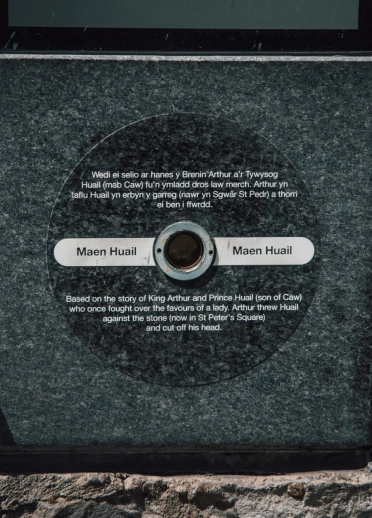
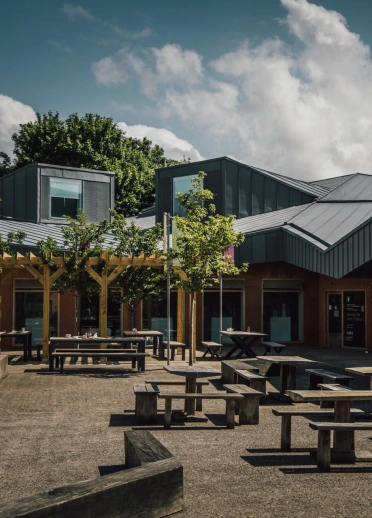
Then it's time to go totally Tudor…
Up on Castle Street, the Grade I listed house Nantclwyd y Dre is a fantastic local museum today, taking its visitors through the lives and times of its many residents. Largely developed in early Tudor times, you can see what it was like to sleep behind waxed linen windows in the 15th century here. You can also boggle at its 17th century toilet, see its Victorian incarnation as a girls’ school, and check out its primitive, early 20th century telephone. The museum's opening hours vary so check the website if you plan to visit. Trips out of season can also be arranged through the Denbighshire Council website.
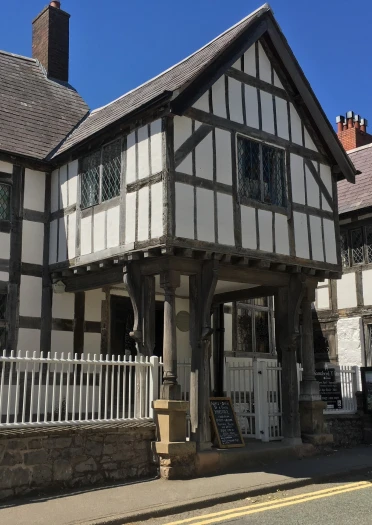

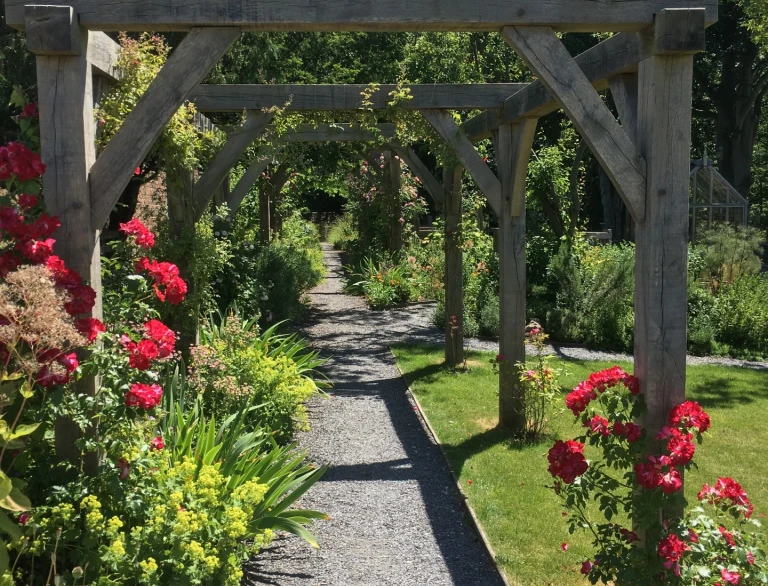
Now enter the 19th century, from a dizzying height…
If you’re into antiques, Ruthin’s got some beautiful shops. There’s a real feeling of the past joining up with the present in this town's nooks and crannies.
If you want a quick spin out of town to get some perspective, you’ll have to go high to do so on the Horseshoe Pass. Built in 1811 between the Llantysilio Mountain to the west and Cyrn-y-Brain to the east, the road is a triumph of 19th century road-building. The tarmac is good too, but do watch out for the sheep, who like the views from the top just as much as the Welsh.
Then return to modern times...
Local favourite restaurants include the Grade II listed Georgian Manorhaus Restaurant, which also serves modern menus also serves modern menus on Thursday to Saturday evenings. I loved Small Plates offering salt cod bon-bons, smoked trout on crispy toast and other mouthwatering concoctions. Also look out for their Cinema Club nights, Picturehaus, in their cosy Georgian cellar, featuring 20 comfy armchairs, drinks tables for your cocktails and ice cream in the interval.
I mean, really; could the past and the present go together any better? A thousand years in a day in one tiny town, just like that. Another day'll soon be calling me back.
